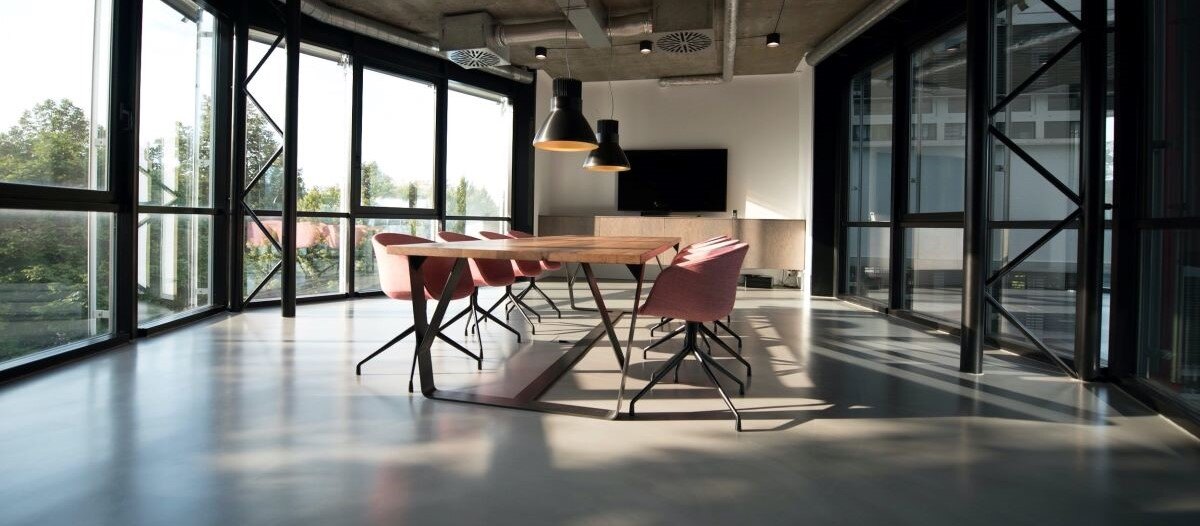Quiet Workspaces
Reducing noise with retrofits

Facility managers play important roles in maintaining clean, comfortable and modern workplaces. Besides assisting with the planning for new buildings, FMs may also need to spend time retrofitting existing buildings. Their experience and authority allow them to guide the project from start to finish. Additionally, becoming familiar with noise reduction strategies enables them to take a problem-solving approach to the task. Creating a roadmap before each project can help it go more smoothly.
Assess requirements & goals
Start by determining the must-have elements associated with the project and its overarching goals. Perhaps company decision makers want the retrofitting to occur during its historically least-busy season. They may also be adamant that people working in the affected workspace areas cannot clock in from home during the upgrades. In that case, planning must happen to determine where and how to relocate workers for the least disruptive results.
It is also important for facility managers to verify the main purposes for the retrofit. If offices are in a city with a lot of passing traffic, soundproofing could help people stay productive. A 2023 Swedish study found only 40 decibels of traffic noise can cause cognitive performance reductions in workplaces. That is the equivalent of the typical loudness in an average office environment or kitchen.
Alternatively, the retrofitting plans could be a collective and proactive response to handling an upcoming hiring surge that will make the existing office much busier than usual. No matter the specifics, FMs must engage in deep, thoughtful discussions about the project’s reasons and the anticipated outcomes. Then, everyone will be on the same page about how to move forward.
Although short-term construction noise can be frustrating for those using the building, they should be more tolerant of it when FMs explain the ultimate benefits and stick to the intended schedule as much as possible.
Plan the project’s scope & budget
FMs must also communicate with all involved parties about the project’s extent when retrofitting existing buildings. Is the goal to modify the whole office to achieve better soundproofing or will the changes only involve specific rooms? After answering that question, people can proceed by figuring out how much they can afford to spend.
Several factors impact the cost, including:
- Size of the room or building
- Surfaces to soundproof
- Noise-dampening materials used
- Preparations before installation begins
- Number/type of contractors hired
It is best to make the budget as flexible as possible. Even parts of well-managed projects can become more expensive than anticipated due to factors outside of an FM’s control. For example, inflation and materials or labor shortages can all cause costs to climb. Any retrofit project requires continually looking for opportunities to save while accepting some expenses will be higher than planned.
When creating a budget, FMs must evaluate aspects ranging from materials and supplies to labor needs and permit costs. Purchasing products in bulk could minimize supply costs, but anyone involved in sourcing must accurately calculate the amounts necessary to avoid getting too much or too little.
Research & choose the desired noise-reduction strategies
As many workspaces have become more crowded and frequently feature open-plan designs, FMs and others recognize the importance of deploying tailored and thoughtful noise reduction strategies. Retrofitting existing buildings does not always require changing a building’s structure.
One CEO of a design and architecture firm who understands the importance of a personalized approach pointed out that employees must wear headphones in some modern offices because they sit so close to colleagues. People can certainly add acoustic ceiling tiles to reduce noise transfer or install doors to confine sounds to a particular room. However, the employee seating example highlights why evaluating whether different working configurations could achieve some of the stated goals.
Partitions can fulfill two purposes by simultaneously blocking sound and creating privacy. Some offices even have soundproof pods people can go in for short-term focus sessions. They are ideal for people who need to prepare for meetings or take important phone calls. However, facility managers should treat these options as supplementary to a larger retrofitting plan.
It is also worthwhile to see if any emerging companies have attractive solutions. As coworking spaces have become more popular, some entrepreneurs have stepped up to meet the need by offering low-cost and easy-to-install options.
FMs must discuss the various noise-reduction strategies in detail, including the cost to implement, the likely effectiveness and the process for installing those options in the existing building. Such information makes it easier to weigh the pros and cons and reach informed decisions.
Engage with local authorities
FMs must go through the proper channels to communicate those intentions with local regulators before getting too far into retrofitting existing buildings. Filing to receive the appropriate permits, keeping copies of all documents, consenting to inspections and waiting for approvals are all typically necessary steps. However, procedures vary worldwide; so, always verify them instead of making assumptions.
Challenges can also arise if the workspace getting retrofitted is part of a historical building. In such cases, local regulations often restrict the type and scope of acceptable work because the goal is to retain much of the original architecture.
Additionally, suppose the retrofitting work will temporarily make the building inaccessible to people with disabilities. Then, local authorities may have advice on how to handle the situation most inclusively. Local bodies’ time frames may be longer than FMs expect, so they should build plenty of flexibility into this part of the project to avoid falling behind.
Hire external assistance
A 2023 study that examined the contractor shortage in the United States revealed construction companies would need to find 546,000 workers during the year on top of normal hiring needs. A broader investigation from the European Commission examined general labor shortages, identifying the construction sector as one of the most affected across all skill levels.
Finding and hiring external contractors, consultants and other experts can be tricky, especially because FMs must coordinate between various groups. Similarly, moving ahead with noise-reduction strategies may require renting specialized equipment. For example, scissor lifts are well suited for indoor spaces, including offices. People using them work from 20-40 feet off the ground, depending on the model.
When FMs hire external parties to assist with the retrofit, they must ensure the parties involved have the appropriate insurance, training and certifications. Professionals can obtain paperwork showing they took classes on installing building insulation.
If an FM is handling a retrofitting project for the first time, they may wish to consult with experts who have decades of experience in workplace upgrades. Those professionals can advise on the best ways to tackle specific problems or achieve desired looks. They will also be more familiar with less-traditional options for those interested. For example, soundproofing panels are available in hundreds of colors and numerous unusual shapes.
Use tools to track the project
Cloud-based collaboration and project management tools allow FMs to cover all their bases, and keep everyone informed about stages and specifics. Most interfaces work on desktop or mobile devices and have administrative features for assigning tasks, uploading files and completing milestones.
Many tools also change the features available to someone based on their role. That is helpful for allowing clients to give feedback or answer questions without overwhelming them with unnecessary logistical details.
FMs may also find it valuable if their project-based tools have payment and invoicing features. Those can cut down on manual paperwork and reduce errors.
Ideally, people should choose and familiarize themselves with project management tools weeks or months ahead of time. These offerings are often instrumental to getting things done on time. However, that is much more likely to happen when all or most users are well-versed in the various workflows, settings and features.
Test results & make alterations if necessary
Products that make workspaces quieter have ratings indicating how well they work under stated conditions. The final step of a retrofit project is to see whether real-world results align with what the materials or items promise.
One common method is to make sounds from within and outside of a soundproofed space, comparing the differences between the readings. However, feedback from the workspace’s users is as or more valuable for evaluating the outcomes. Many people are incredibly sensitive to noisy spaces, so they will immediately notice any improvements.
If there is still room for improvement, FMs should consider addressing the shortcomings with permanent or temporary fixes. The former may be necessary to deal with massive oversights. However, relatively simple and low-cost changes may be enough when there are only minor problems to resolve. Adding rugs can dampen sound while giving decorative touches. Similarly, the soil in potted plants absorbs noise.
Retrofitting existing buildings makes sense
Noisy workplaces can cause frustration and low productivity. However, retrofitting the space can bring noticeable changes. When following these steps, FMs have the best opportunities to tailor the project to a building’s or client’s needs while keeping things under budget and getting them done on time.

Read more on Project Management , Occupancy & Human Factors and Workplace
Explore All FMJ Topics









